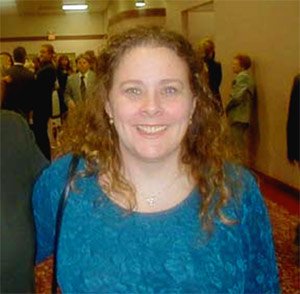- Elizabeth Larson
Supervisors get advice on drawing businesses, investment to county
Officials with the 900-member California Association for Local Economic Development (CALED) made the hour-and-a-half-long presentation to the board Tuesday afternoon.
In her report to the board Debra Sommerfield, the county's deputy administrative officer for economic development, said on April 28 the board agreed to host a CALED summit as part of its effort to attract commercial and resort investment to the county.
She reported that CALED President and Chief Executive Officer Wayne Schell put together an advisory team whose members are experts in commercial real estate, site selection and infrastructure in an effort to help the county attract investments.
Along with Schell, advisory team members Al Gianini and Jim Renzas attended the meeting.
Sommerfield said Tuesday that the group had visited a number of potential investment sites around the county, including the Lucerne Hotel, Ceago Vinegarden, Holiday Harbor, the Work Right building and the former Kelseyville Lumber location.
Schell credited Lake County with being “way ahead of the curve when it comes to the economic development issues.”
California's business climate is challenging, he said. “It's just not easy to do business here.”
Because Lake County is remote, it also has its challenges, but Schell added, “I can't think of a rural county that's done redevelopment like you have,” pointing to the changes in the Northshore area.
There are more federal grants available to help rural areas, and Schell said he's only wanting to work with places that are helping themselves.
Renzas suggested the county needed to have a full-time staff working to retain existing businesses, which are the community's main job creators.
Gianini explained the opportunities on some of the sites they toured, primarily the Lucerne Hotel.
The hotel is located on seven acres and a total of nine parcels. Gianini said the appraisal on the building has just come in; County Administrative Officer Kelly Cox told Lake County News it values the building at between $2.8 million to $2.9 million, significantly less than its $4,990,000 asking price.
Gianini recommended that Cox or Board Chair Denise Rushing immediately meet with someone from the group – composed of several churches – that owns the building “and do whatever you can to make sure they keep that in one piece,” because the owners are preparing to start selling off pieces.
Cox said that, following a meeting with CALED officials at the Lucerne Hotel on Monday, he asked Deputy Redevelopment Director Eric Seely to immediately contact the property owners.
Gianini said the building will require a developer to spend a lot of money to upgrade it, and a developer is unlikely to do that without a use already in mind.
Rushing asked the group if they were suggesting specific industries to attract to the county. Gianini said he was less concerned about the type of industry and more intent on what they pay, and if they will hire locally and pay sales tax.
“Look for successful businesses that are growing,” he said.
Replied Rushing, “I'm glad to hear you say that,” noting that the county isn't looking for a massive business to locate here.
Gianini suggested the former Kelseyville Lumber site has mixed use potential. He also was impressed with the airport and its buildings.
Supervisor Jeff Smith asked if Gianini would recommend the county pick up any property the Lucerne Hotel owners start to sell off. “I think that's something you should be open for, yeah,” he said.
The CALED members encouraged the board to have good data on the county as part of its marketing effort, which they suggested should be electronic.
Economic development, said Gianini, is a “longterm commitment.”
Supervisor Rob Brown pointed out that Mark Borghesani, whose family owns Kelseyville Lumber, was the only businessman there, and he questioned when the owners of the properties they were talking about were supposed to show up in the process.
He said the county had heard similar advice on economic development from many organizations, including the Business Outreach and Response Team (BORT), which no longer are around.
“What do we spend money on? We don't have a lot of money,” he said, explaining that he didn't want the county to become a real estate broker.
“I'm the last one to tell you you need to do another study,” Gianini responded.
Rushing said the board has been working on improving the lake and public spaces. She pointed to Clearlake Oaks as an example of how county investment in The Plaza and park drew private investment in that community.
Brown said he wanted to know if the CALED advisory team was making it suggestions based on experience and success.
Cox said CALED has contacts and resources that groups like BORT never had.
“It's a sales plan, which is nice,” said Rushing.
Schell suggested the county needed to be ready for opportunities. He said the fact that the county is willing to help businesses is a good signal to the community.
Gianini agreed with Brown's sentiments that the county is doing the heavy lifting. He said the business community “isn't as mature in being involved” as in some other areas.
The CALED officials also emphasized having broadband capability. Renzas said the Internet is the highway of the future, and the county needs to make sure it's up to speed.
Supervisor Jim Comstock said one of the county's biggest challenges is having the necessary retail business to serve the community. Many local residents do their shopping in Sonoma County, which he said gets fat while Lake County stays poor.
Rushing said the county has a sense of place and not many chain stores, which makes the county attractive.
Farrington agreed that the county needed to be proactive in its outreach efforts. “This is about long-term vision,” he said. “I believe in it.”
Schell urged the county to bring the local cities into the effort.
“Where's Clearlake? Where's Lakeport? They have a big investment in all of this,” he said.
He added, “You can't do this alone. You shouldn't have to.”
Schell suggested the county adopt a “hug a tourist” campaign that worked in an Oregon community, where young people were trained to share information and activities with visitors.
He said that, as good a job as the county is doing, it always can do more for its visitors.
E-mail Elizabeth Larson at




 How to resolve AdBlock issue?
How to resolve AdBlock issue? 



